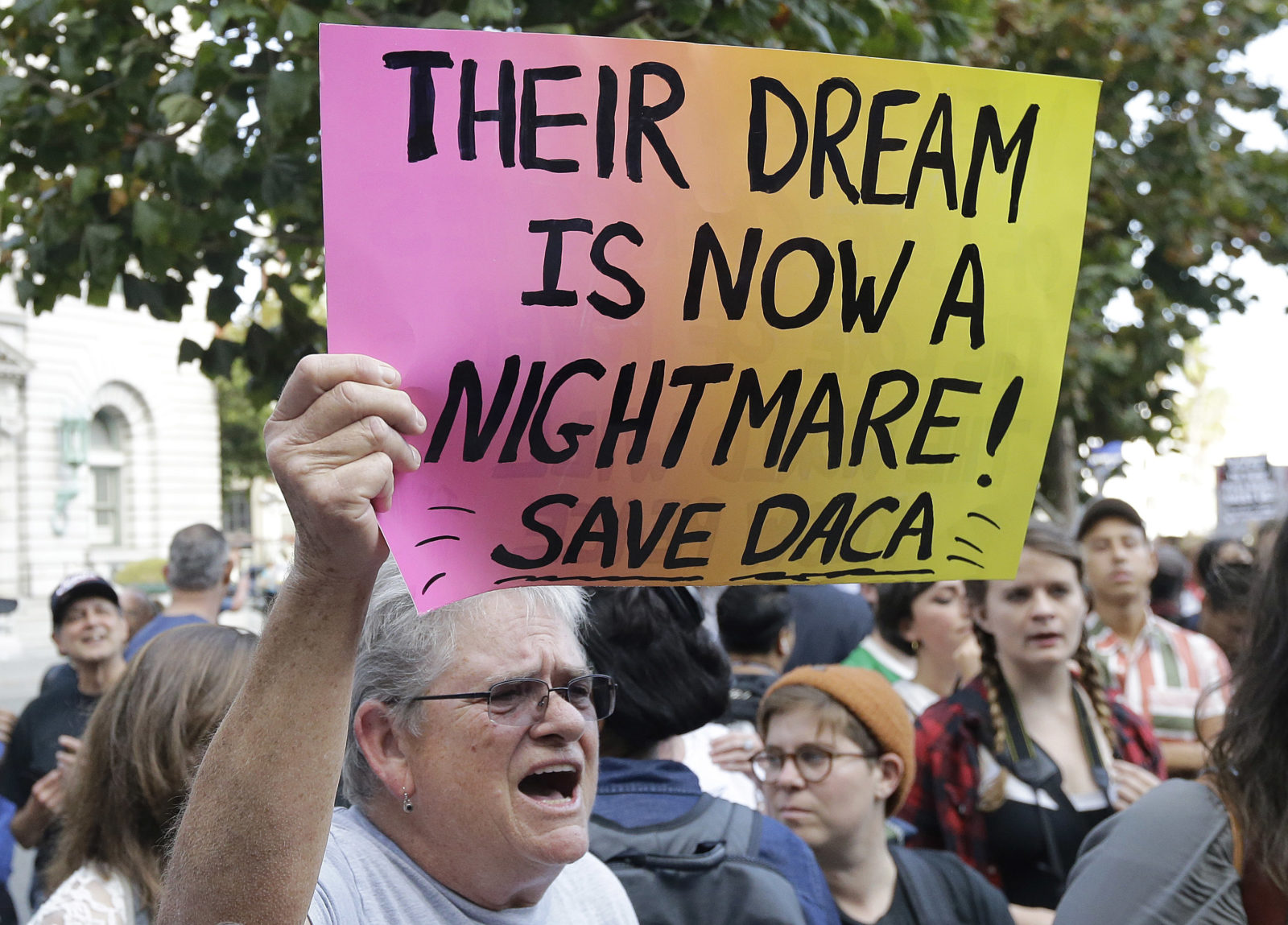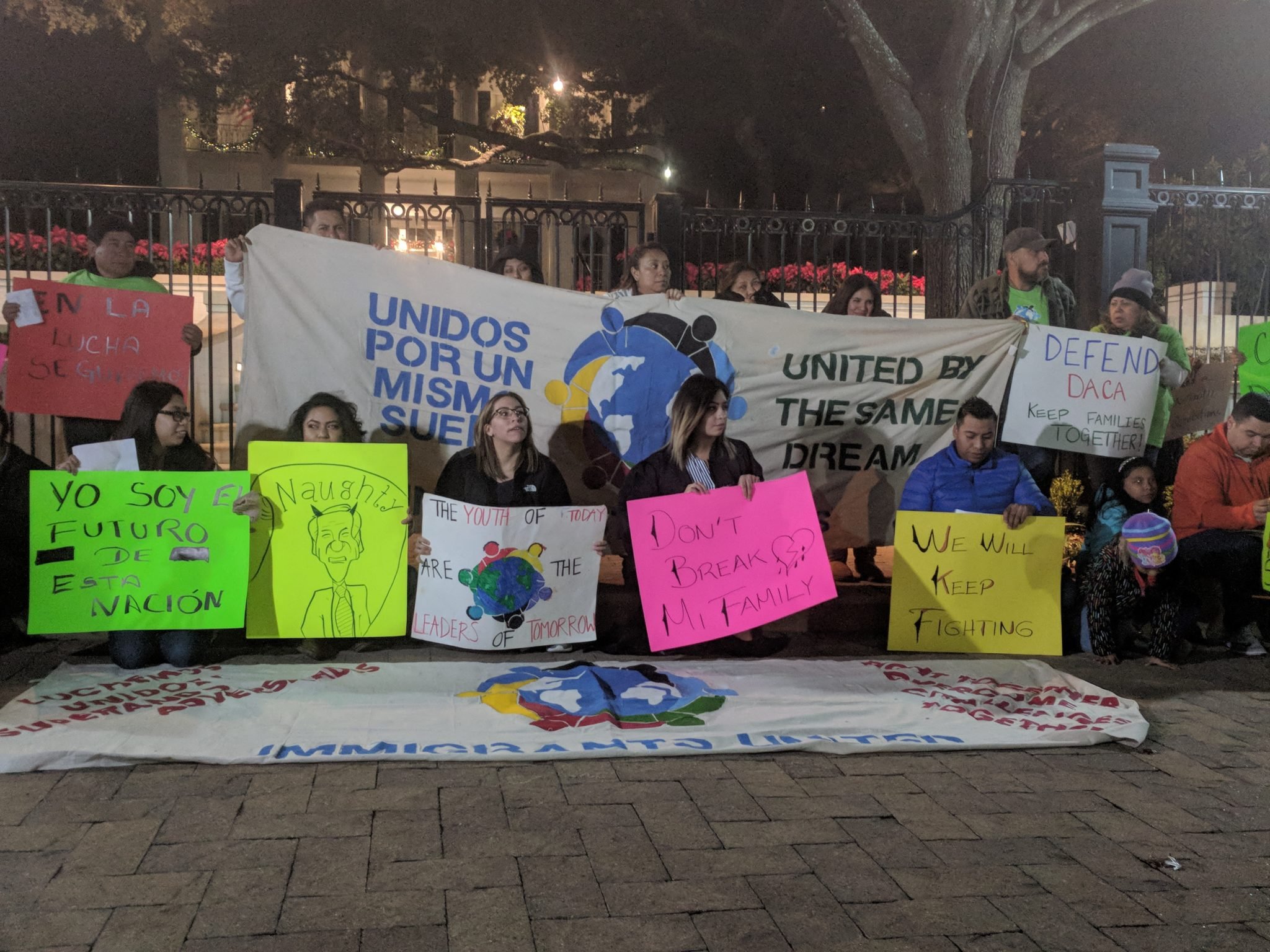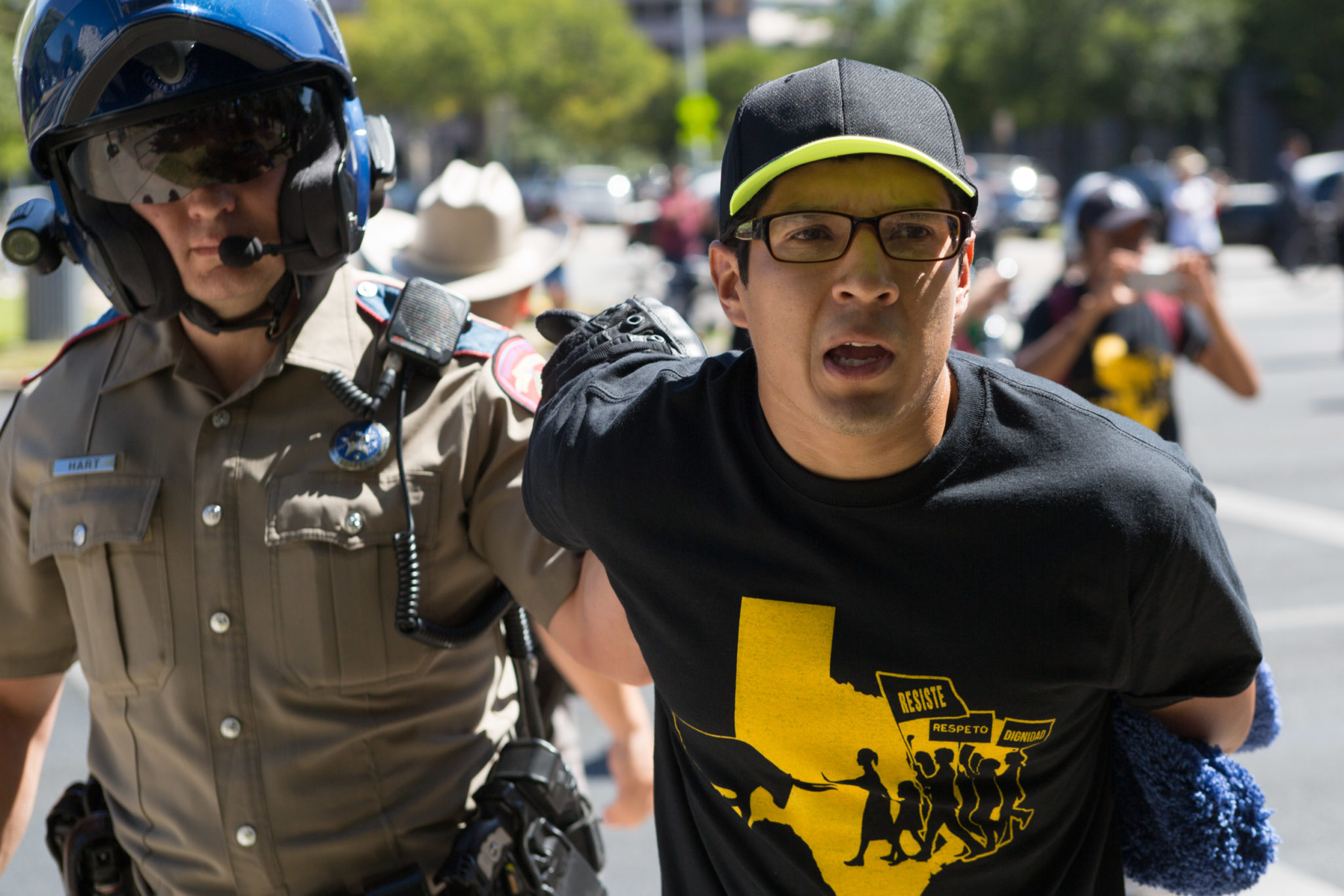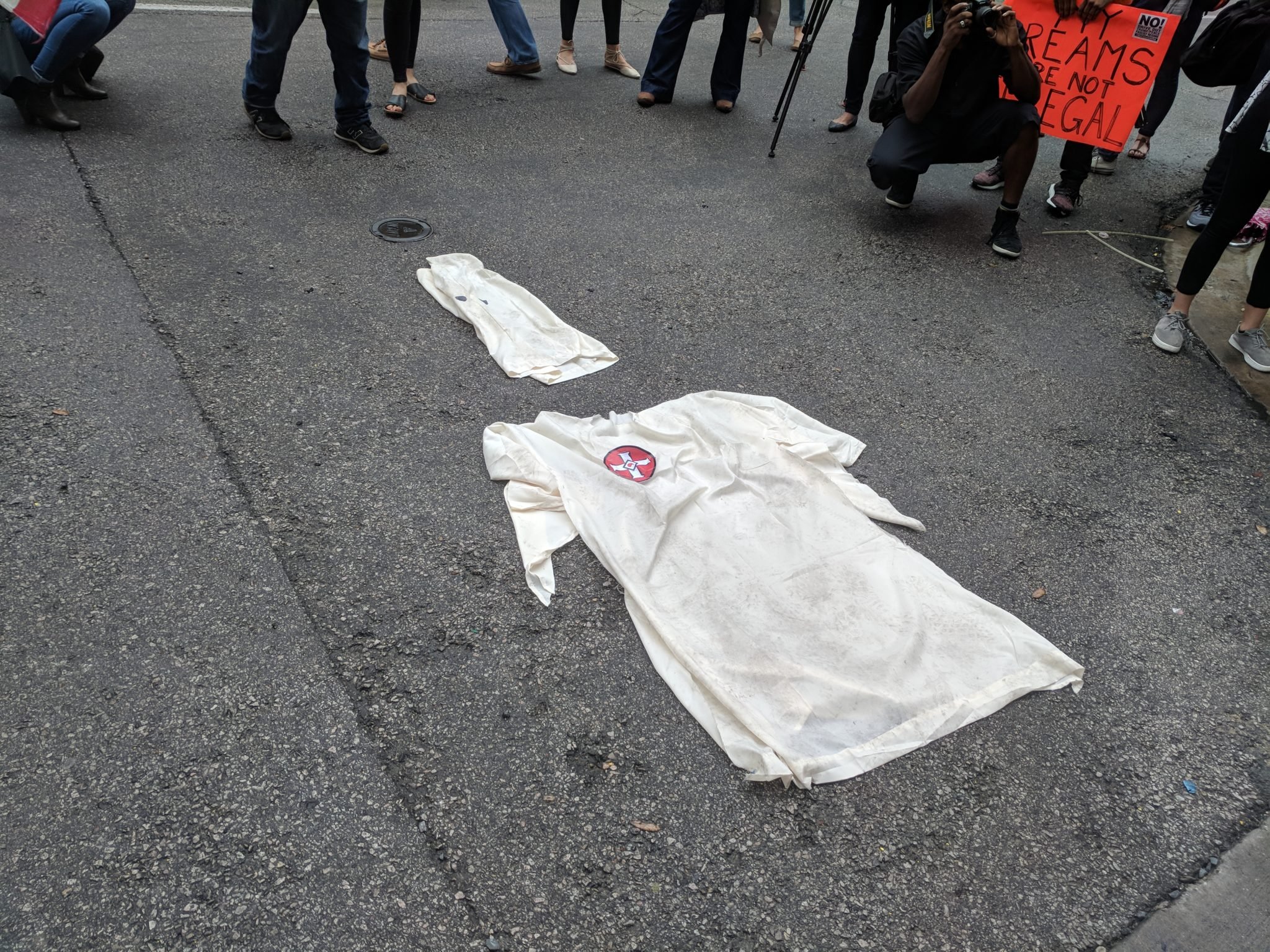
If DACA Ends, It Would Be a ‘Catastrophe’ For Dreamers
As many as 700,000 people could be directly impacted by the end of the Obama-era program.

On June 15, 2012, Juan Carlos Cerda was installing a fan on the second-floor bedroom of a house in Preston Hollow, a wealthy neighborhood in north Dallas, when President Barack Obama appeared on television. Standing in the Rose Garden at the White House, Obama announced a new immigration policy allowing young undocumented immigrants brought to the United States as children to remain in the country while pursuing an education and work. “It makes no sense to expel talented young people who, for all intents and purposes, are Americans,” Obama said as he introduced the Deferred Action for Childhood Arrivals (DACA) program. Freeing those young people from the fear of deportation was “the right thing to do,” he added.
Cerda, who was born in Mexico and moved to the U.S. at the age of seven, had managed to get into Yale University with a scholarship to study history, despite being undocumented. The path hadn’t been easy: because he didn’t have a Social Security number, he wasn’t eligible for programs like Upward Bound, which prepares low-income students for higher education; he had to determine on his own which private universities had financial aid policies for candidates without legal status. Without a SSN, Cerda couldn’t work on campus, study abroad, or take paid internships. Instead, that summer in 2012, after his freshman year, he went back to Dallas to work with his father in the electricity industry.
For Dreamers, as they have become known, DACA was not only a relief from deportation, but also, as Obama stated in his speech, a way to access higher education and better paying-jobs.
When Obama made the announcement about DACA, Cerda says he felt he might soon be able to finally “come out of the shadows.”
As many as 700,000 undocumented young people have benefited from the renewable two-year temporary status provided by DACA (it doesn’t constitute a path to legal residency or citizenship). In order to qualify, applicants had to be younger than 16 at the time of their arrival in the U.S., where they must have lived since 2007, and have completed high school, obtained a GED, or be enrolled in school. For Dreamers, as they have become known, DACA was not only a relief from deportation, but also, as Obama stated in his speech, a way to access higher education and better paying-jobs. They have gone on to establish families, start businesses, and become leaders in their communities across the country.
But on September 5, 2017, the Trump administration moved to rescind DACA, arguing that Obama exceeded his executive power in creating the program. Several legal challenges followed in federal courts, alleging President Donald Trump’s decision was “arbitrary and capricious” and failed to properly weigh the consequences of ending the program. Some of the challenges allowed DACA to temporarily stay in place by letting recipients continue to renew their status, but new applications were suspended.
Then, earlier in 2019, the U.S. Supreme Court agreed to review arguments on a consolidation of three cases—ones brought in California, New York, and the District of Columbia—to determine whether the government’s decision to end DACA was indeed unlawful. The hearing is set for November 12 and, although a decision is not expected before the spring of 2020, Dreamers and their supporters alike are asking the question: what could it mean for the future of the program?
The answer, experts say, is not clear. The Supreme Court could decide, for example, that it doesn’t have the legal authority to review the case and allow the government to move ahead with the termination of DACA. Or it could just agree with the government’s position. In either case, DACA would be over, but a future administration might still bring the program back.
Even if the justices agree that the Trump administration ended DACA unlawfully, they could still leave a door open for the government to try and cut it off again, so long as the administration abides by law.
“The devil is really going to be in the details here,” said Alejandra Apecechea, an attorney with the King & Spalding law firm running the UndocuNeighbor initiative, which has helped more than 300 Dreamers nationwide renew their status. “Because a win on its face might not be a win for the long game.” A “true home run,” said Brian Stansbury, co-founder of UndocuNeighbor, would be for the Supreme Court to not only decide against the Trump administration, but also do it in such a way as to prevent them from attacking the program down the line. “But given the composition of this court, it would be a result that surprises me a lot,” Stansbury said.
Other rulings might give Dreamers and their families more time in the U.S., but one thing is sure: If the program ends, the consequences for Dreamers would be immense.
Across the U.S., nearly 256,000 U.S. citizen children have a parent protected under DACA; more than 47,000 of them are in Texas, the state with the second-largest number of Dreamers, after California. (Last year, Texas led other states in a lawsuit seeking to end DACA).
In September, a Center for American Progress survey found that almost 80 percent of DACA recipients feared for theirs and their family members’ physical safety, as well as access to healthcare and education, if deported. More than 70 percent of those who participated in the survey also reported that DACA enabled them to pursue new educational opportunities. Not surprisingly, 165 colleges and universities nationwide have opposed the end of the program. Corporations have too. “Our country made a deal with a highly vulnerable population interested in a bright future, and we should keep that deal,” wrote Tim Cook, the CEO of Apple, which employs 443 Dreamers.
“DACA is one of the most successful programs the government has ever implemented,” said Jeffrey Davidson, an attorney who represented the University of California in one of the cases before the Supreme Court. “It is consistent with the tradition of similar humanitarian programs going back to the Eisenhower administration and it has allowed a huge population to participate in the American society in new and important ways.”
He added: “The rescission of DACA would be a senseless humanitarian catastrophe.”
For Cerda, receiving DACA meant being allowed to travel outside of the U.S. for the first time in 12 years (DACA recipients can request permission to leave and re-enter the country from U.S. Immigration and Citizenship Services). In 2014, he spent a semester abroad at the University of St. Andrews in Scotland. That experience, Cerda says, led him to work as a kindergarten teacher with the nonprofit Teach For America and as a community organizer. Today, he works as an outreach manager at Texas Business Immigration Coalition, a group of business leaders and employers supporting immigration reform in Texas. His work authorization is set to expire in July of 2020 and he is saving money to apply for a renewal in January, hoping to get an extension until 2022.
In the meantime, Cerda and other Dreamers urge Congress to find a permanent solution for DACA. “We cannot continue in this limbo,” Cerda said. “We grew up with the children of people who are American citizens. We’re like them in almost every way; it just doesn’t show on paper.”
In June, the U.S. House of Representatives passed the American Dream and Promise Act, which would grant permanent legal status to Dreamers and Temporary Protected Status (TPS) holders, but the bill has yet to have a hearing in the Republican-led Senate. And while President Trump has showed support for Dreamers in the past, this support is conditional on funding for the border wall.
“The rescission of DACA would be a senseless humanitarian catastrophe.”
“The strategy is, on the one hand, to use these kids as bargaining chips and, on the other, to try to turn over the responsibility for the potential deportation of 700,000 people to the judicial branch and to Chief Justice [John] Roberts,” said Mark Rosenbaum, a lawyer with the public interest law firm Public Counsel who represented six DACA recipients in the first lawsuit filed to block the Trump administration from ending the program. “It couldn’t be clearer that that’s what the tactic is.”
In part as a response to the hostile political climate towards immigrants, Andrea Ramos Fernandez changed her major from nursing to public administration. Becoming an activist “was almost a way to try to justify why I’m worthy of staying in the country,” Ramos Fernandez said. While at the University of Texas at San Antonio, she was behind the creation of the Dreamers Resource Center to meet legal and emotional needs of DACA students. And in the fall of 2018, Ramos Fernandez was one of only 23 students nationwide selected to participate in the Congressional Hispanic Caucus Institute internship program, working in Congressman Joaquin Castro’s office.
If it weren’t for DACA, Ramos Fernandez said she might not have gotten her first part-time job at a retail store, which “made her feel like a normal teenage girl for the first time.” She might not have become a leader in her community in San Antonio. She might not have been able to make plans to apply for a graduate program at New York University. Even though the future of DACA is uncertain, Ramos Fernandez still has a plan.
“Even if they kick me out of this country and I can no longer contribute, the one thing that no one can take away from me is my education because that goes with me,” she said.
Read more from the Observer:
-
The Ghosts of Jefferson: This East Texas tourist town calls itself “the most haunted town in Texas,” but its whitewashed ghost stories elide a complex racial history.
-
Janis Joplin’s Inimitable Voice: An authoritative new biography explores what drove the iconic Texan singer.
-
Federal Judges Temporarily Block Public Charge Rule, but Public Health Worries Persist: In Texas, where 5.6 million people live in mixed-status families with at least one non-U.S. citizen, the chilling effect from the proposed rule is likely to exacerbate alarming trends.


